July 2, 2025

The article titled "7 Examples of Positive Punishment for Effective Classroom Management" presents a compelling exploration of strategies that educators can implement to manage classroom behavior effectively through positive punishment. It highlights various methods, including:
Collectively, these strategies illustrate how structured consequences can deter misbehavior and foster accountability among students. By doing so, they contribute to creating a more conducive learning environment that benefits both educators and learners alike.
Classroom management stands as a pivotal element in cultivating a productive learning environment. Yet, educators frequently face the challenge of discovering effective strategies to uphold order and encourage positive behavior. This article explores the concept of positive punishment, presenting seven practical examples designed to assist teachers in navigating the complexities of classroom discipline.
How can these techniques not only deter misbehavior but also inspire students to reflect on their actions and foster a culture of accountability? Delving into this question unveils the potential of positive punishment as a powerful tool for enhancing educational outcomes and shaping responsible learners.
The demand for Board Certified Behavior Analysts (BCBAs) is projected to surge by an impressive 25% by 2026. In this rapidly expanding field of Applied Behavior Analysis (ABA) therapy, Hire ABA serves as a specialized recruitment platform connecting BCBAs with premier job opportunities. As the need for qualified professionals grows, Hire ABA plays a crucial role in streamlining the hiring process, ensuring that candidates can easily find positions that align with their skills and career goals.
empower candidates to submit their resumes for a thorough evaluation of their experience and aspirations. By utilizing advanced job fit scoring, we identify opportunities that match their skills, preferences, and desired locations. This platform is dedicated to providing a supportive experience for candidates, facilitating their advancement in the ABA therapy sector.
With over 65,300 job listings reported in 2023, the competitive environment underscores the significance of efficient hiring methods. Notably, BCBA employment growth in schools is projected at 30%, indicating a particularly strong demand in that sector. Furthermore, BCBA job growth is expected to increase by over 20% in the next eight years. This makes Hire ABA an invaluable resource for healthcare employers and job seekers aiming to thrive in this dynamic field.
Are you facing challenges in your current hiring process? Let Hire ABA help you navigate these complexities and connect with the right talent. Trust in our expertise to elevate your recruitment strategy and achieve your hiring goals.
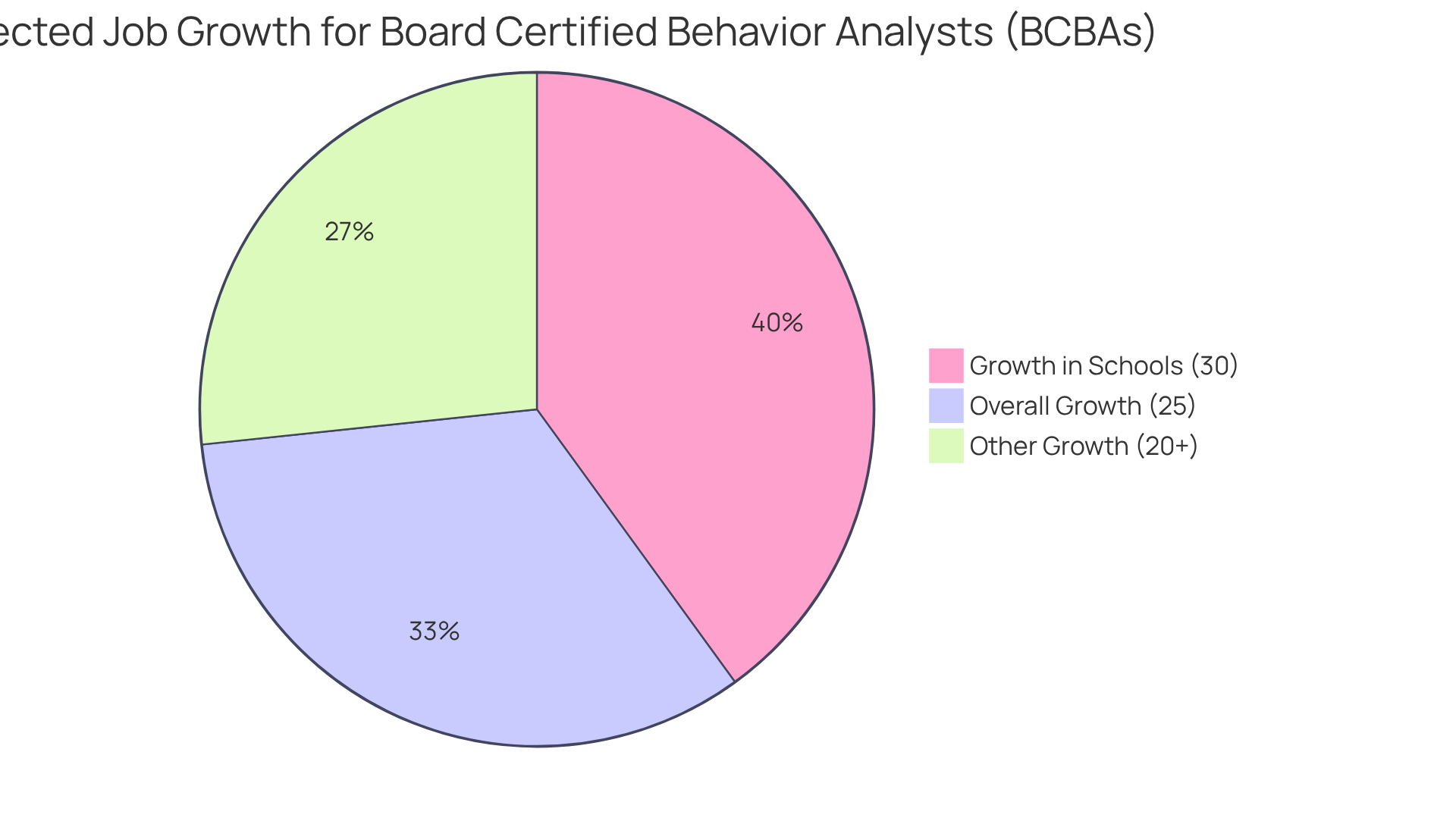
Adjusting voice tone is a powerful strategy in classroom management. By employing a lower volume or a disappointed tone when addressing misbehavior, educators effectively communicate disapproval, signaling to learners that their actions are unacceptable. This method of provides examples of that motivate learners to change their behavior to avoid further reprimands.
For example, when a learner speaks out of turn, an instructor might lower their voice, prompting the individual to refocus and adjust their conduct accordingly. Research indicates that such vocal adjustments can significantly impact learner behavior, fostering a more conducive learning environment.
Moreover, effective classroom management techniques, such as voice modulation, should be complemented by proactive approaches that prevent disruptions and respect learner self-esteem. Studies have shown that when educators create a supportive environment while utilizing voice modulation, it leads to increased engagement among learners and reduced interruptions, ultimately enhancing the overall educational experience.
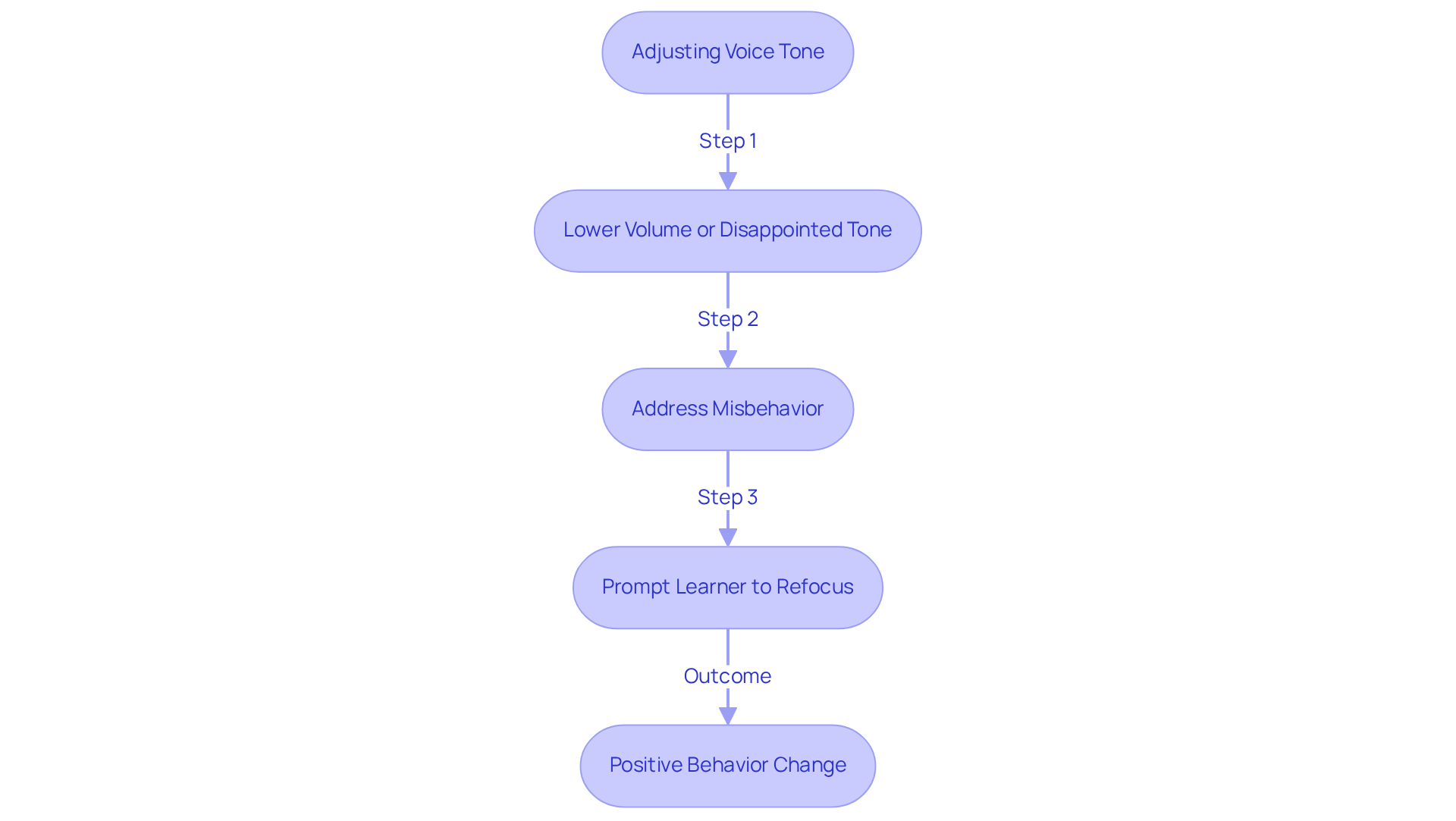
Assigning unpleasant tasks, such as extra homework or chores, provides examples of [positive punishment in educational settings](https://clickvieweducation.com/blog/classroom-management/positive-punishment). When learners misbehave, educators can utilize this strategy to effectively . For instance, examples of positive punishment can include requiring a student to complete additional assignments if they fail to adhere to rules in the learning environment. This approach not only reinforces the consequences of their actions but also fosters a greater understanding of classroom expectations.
However, it is crucial to acknowledge that while additional homework can initially appear punitive, it may result in confusion and unhelpful actions if not implemented carefully. Research indicates that reinforcement strategies are generally more effective for long-term behavior change compared to punishment methods. Educators have observed that this approach encourages learners to consider their actions and fosters accountability.
Furthermore, the effect of additional homework as a consequence can improve learners' awareness of their responsibilities, ultimately contributing to a more disciplined learning environment. As James Lehman, a social worker and expert on working with troubled youth, suggests, it is crucial to ensure that consequences are clear and meaningful to foster positive behavioral outcomes.
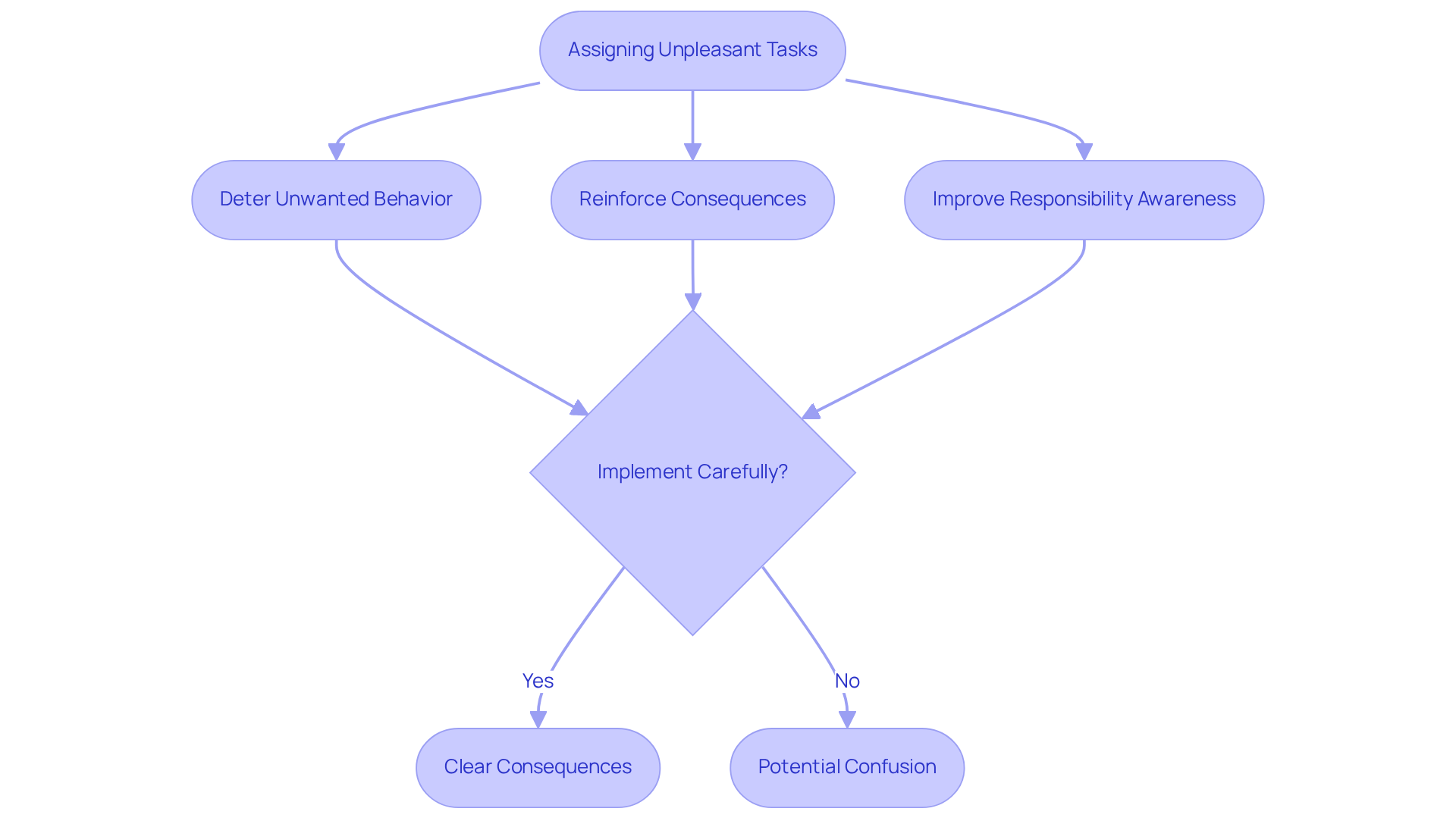
Establishing guidelines in the learning environment is essential for creating order and promoting constructive actions among learners. When educators articulate alongside related consequences, learners develop a better understanding of acceptable behavior. For instance, a rule that prohibits talking during instruction can significantly reduce disruptions.
Research indicates that learning environments with well-defined rules experience enhanced engagement and behavior, as learners are more inclined to adhere to established guidelines. In fact, studies reveal a strong correlation between clear expectations, positive reinforcement, and effectively managed learning environments, which are linked to improved standardized test scores.
Educators underscore the significance of clear expectations, highlighting that structured environments foster a sense of safety and respect—elements crucial for effective learning. A recent survey emphasizes this need:
By establishing clear guidelines, educators not only enhance order in the learning environment but also contribute to better academic achievement and overall learner well-being.
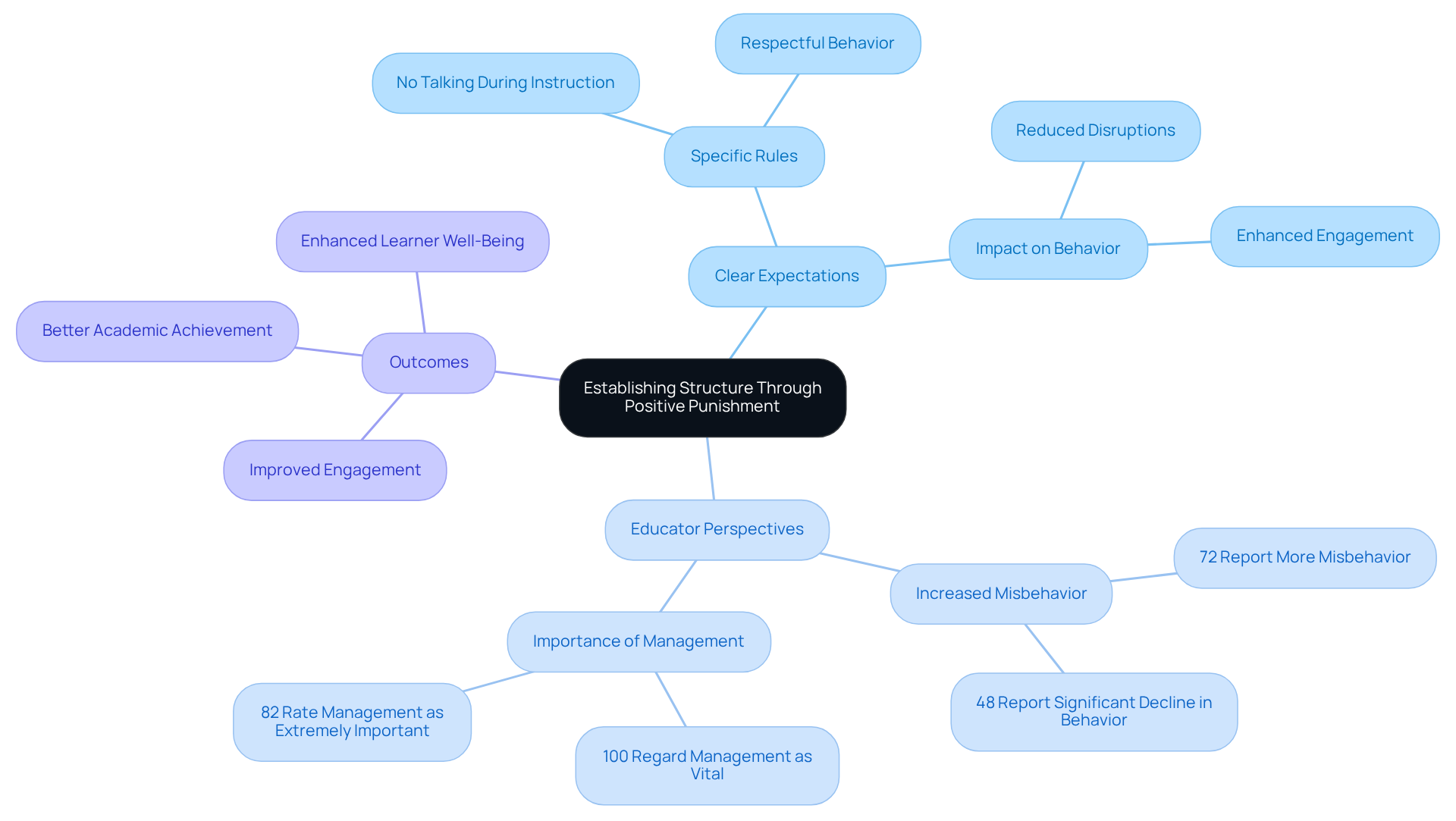
Removing individuals from the classroom serves as an example of positive punishment for severe misbehavior, a strategy typically reserved for actions that significantly disrupt the learning environment. For example, when a learner consistently causes disturbances, an instructor may opt to send them to the principal's office. This action not only addresses the immediate issue but also serves as a , underscoring the importance of maintaining a respectful learning atmosphere.
Research reveals that individuals expelled for threats or posing a danger to others face a minimum expulsion of one year, highlighting the gravity of misbehavior that necessitates removal. Additionally, learners removed from the classroom three times within a month by the same instructor are classified as 'chronically disruptive' and may face suspension from school.
Effective management techniques often incorporate a blend of removal and examples of positive punishment, as demonstrated in the case study on 'Positive Punishment in Behavior Modification,' which indicates that such combinations enhance effectiveness. School administrators have recognized that while removal can be crucial, it should be part of a broader strategy that includes support and guidance, helping learners learn from their mistakes and reintegrate positively into the classroom environment.
As U.S. Secretary of Education Miguel Cardona aptly stated, schools should cultivate positive interactions that foster growth and belonging, rather than relying solely on punitive measures. In the 2020-21 academic year, approximately 786,600 individuals in K-12 received one or more in-school suspensions, highlighting the prevalence of removal as a disciplinary strategy.
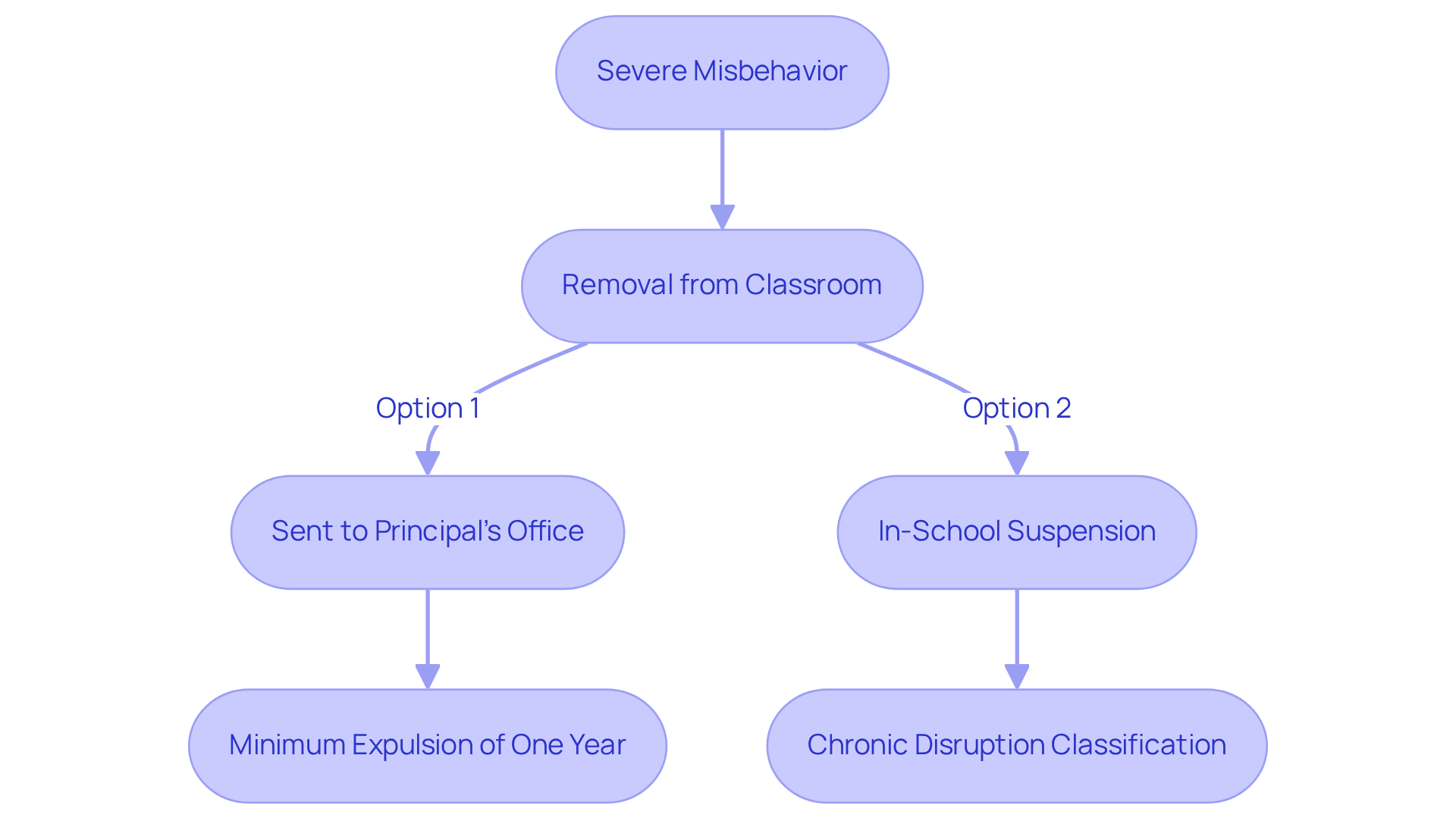
Detention serves as one of the examples of positive punishment within educational institutions, specifically designed to confront misbehavior. When students , they may be required to remain after school or during lunch. This practice serves as examples of positive punishment, reinforcing the principle that actions yield consequences and prompting students to reconsider their disruptive behavior.
For example, a student who frequently arrives late to class may be assigned detention, underscoring the significance of punctuality. However, the efficacy of detention as a disciplinary tool is often a subject of debate among experts. Some argue that it fails to address the underlying causes of misbehavior and could inadvertently reinforce negative behaviors in certain individuals.
Notably, some students express a preference for detention due to its quieter environment, which allows them to focus on their assignments, contradicting its intended purpose as a punishment. Furthermore, detention is often criticized for being a one-size-fits-all solution that may not cater to the distinct needs of individual learners.
Consequently, schools are increasingly investigating alternative strategies, such as restorative justice and behavioral interventions, which aim to tackle the root causes of misbehavior rather than merely imposing punitive measures. As Desmond Fambrini aptly states, "Detention is not a great choice for addressing poor conduct in the learning environment, and we should consider more effective methods."
This shift signifies a growing recognition that understanding students' experiences and providing supportive interventions can lead to more effective behavior management within the classroom.
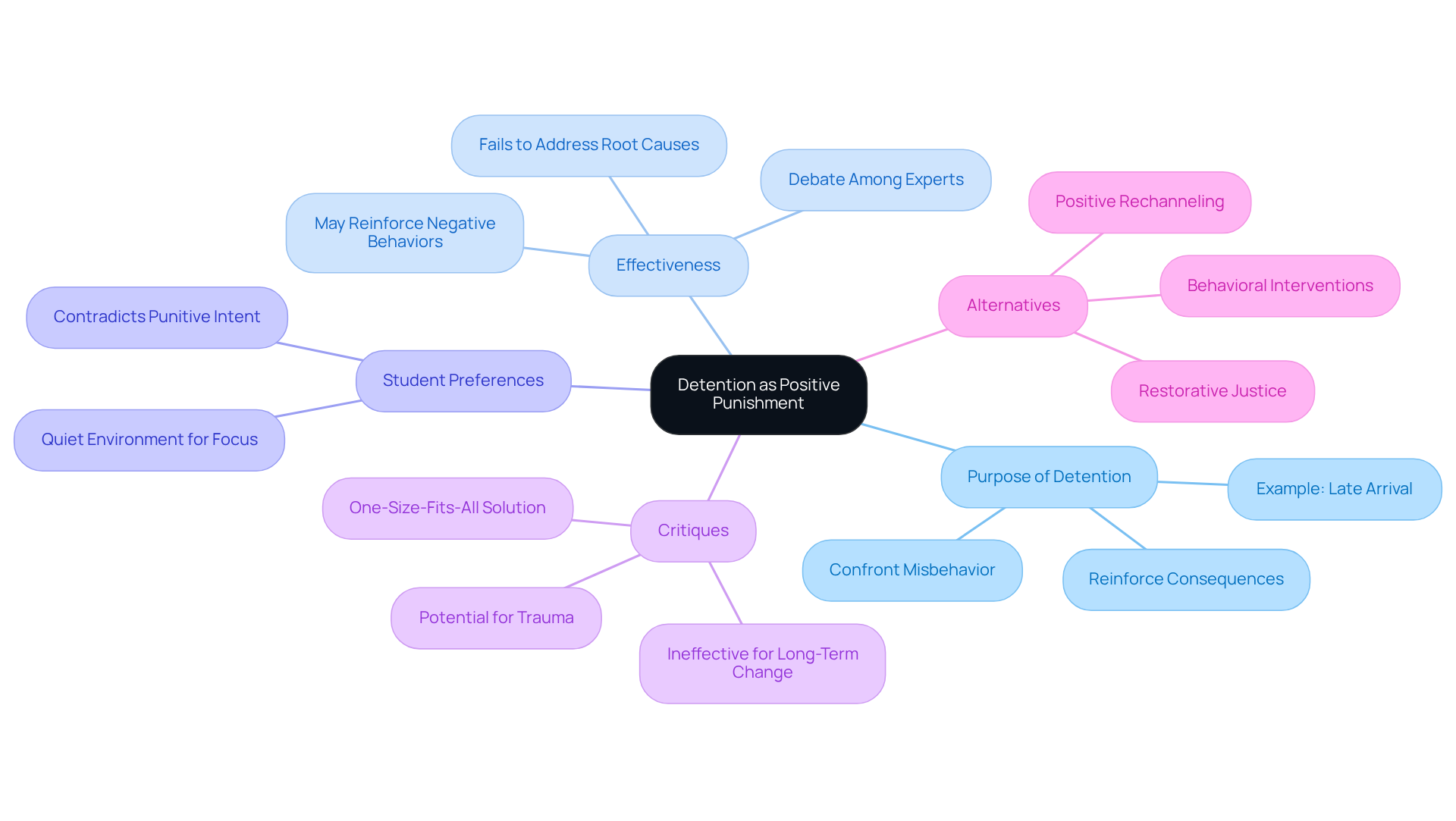
Overcorrection serves as a pivotal behavior management method, compelling learners to amend their misbehavior while underscoring the consequences of their actions. For instance, when an individual spills paint in the art room, they are often assigned the task of cleaning up the mess alongside additional responsibilities. This approach not only addresses the immediate issue but also cultivates a sense of accountability and responsibility among learners, highlighting the importance of within the classroom environment.
Research indicates that such methods can significantly enhance outcomes, as they encourage students to reflect on their actions and understand the impact of their behavior on their surroundings. Behavioral experts advocate for this strategy, emphasizing its role in fostering a culture of accountability and promoting lasting behavioral change.
Nevertheless, it is crucial to engage in ongoing assessment and adjustment of overcorrection techniques to ensure their effectiveness. Moreover, the ethical implications associated with overcorrection must be acknowledged, reinforcing the need for a balanced approach to behavior management. Integrating alternative strategies, such as positive reinforcement, can further enrich a comprehensive behavior management plan.
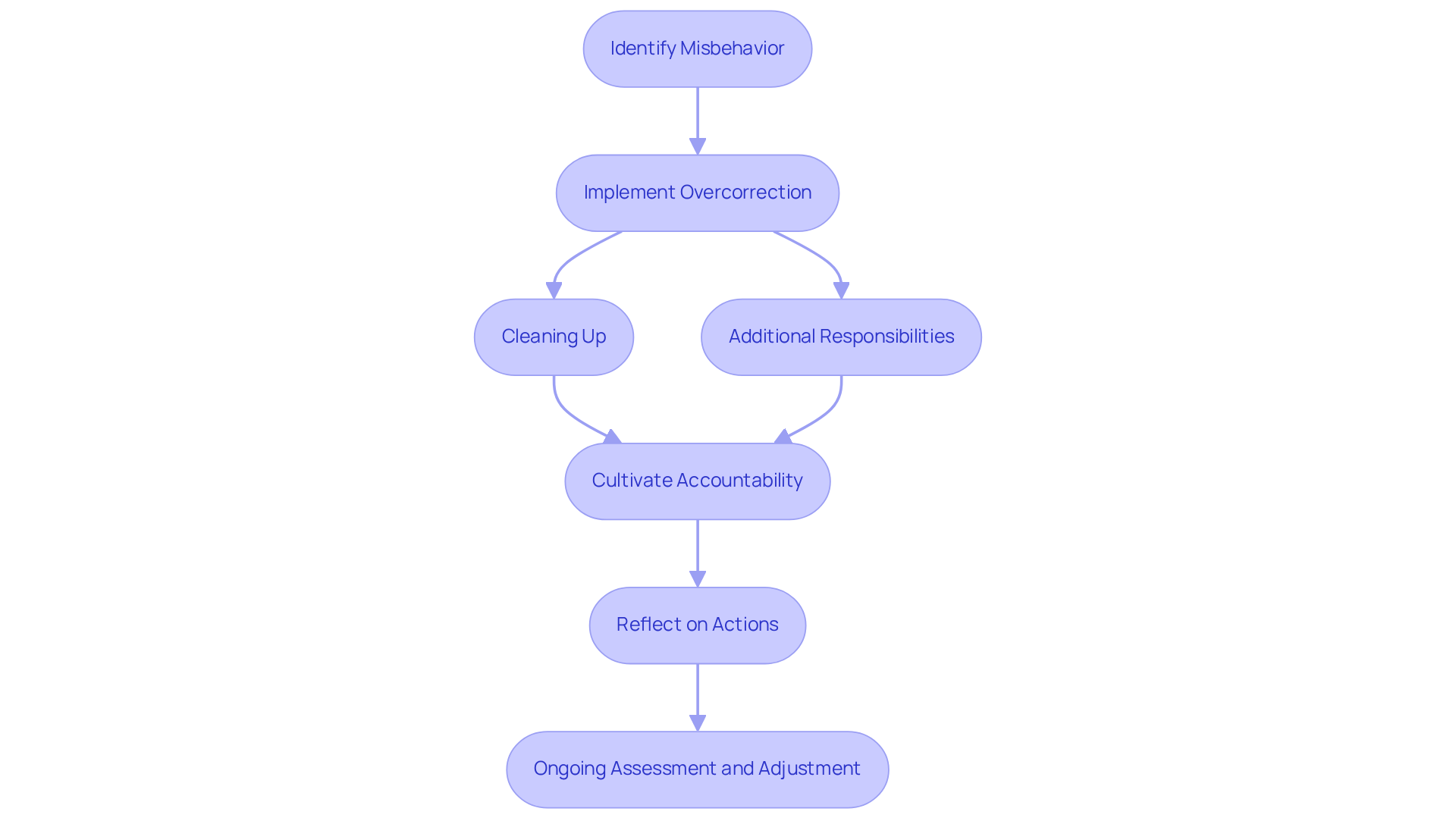
Employing positive punishment in classroom management is crucial for enhancing the learning environment. By establishing clear boundaries, it encourages responsible behavior among students. This approach not only addresses misbehavior but also fosters a culture of accountability, ultimately leading to improved engagement and academic success.
Consider various examples of positive punishment:
Each strategy serves a specific purpose in managing behavior, reinforcing the importance of consequences while promoting a respectful and conducive learning atmosphere. Research and expert opinions further support the effectiveness of these techniques, emphasizing the need for a balanced approach that combines punishment with positive reinforcement.
In light of these insights, educators must thoughtfully implement positive punishment strategies while being mindful of their impact on student well-being. By creating structured and supportive environments, teachers can guide students toward better behavior and academic achievement. Continuous evaluation and adaptation of these methods are essential to meet the diverse needs of learners, ultimately fostering a positive and productive educational experience.
What is Hire ABA and how does it assist Board Certified Behavior Analysts (BCBAs)?
Hire ABA is a specialized recruitment platform that connects Board Certified Behavior Analysts (BCBAs) with job opportunities in the field of Applied Behavior Analysis (ABA) therapy. It streamlines the hiring process, helping candidates find positions that align with their skills and career goals.
What features does Hire ABA offer to candidates?
Hire ABA provides personalized resume assessments that evaluate candidates' experience and aspirations. It uses advanced job fit scoring to identify job opportunities that match candidates' skills, preferences, and desired locations.
What is the projected job growth for BCBAs by 2026?
The demand for BCBAs is projected to increase by 25% by 2026, with a particularly strong growth of 30% expected in schools.
How many job listings were reported in 2023 for BCBAs?
Over 65,300 job listings were reported in 2023 for Board Certified Behavior Analysts.
What role does Hire ABA play in the hiring process for healthcare employers?
Hire ABA helps healthcare employers navigate the complexities of hiring by connecting them with qualified talent in the ABA therapy sector, thus enhancing their recruitment strategies.
What is the significance of adjusting voice tone in classroom management?
Adjusting voice tone, such as using a lower volume or disappointed tone, is a strategy used in classroom management to communicate disapproval of misbehavior, which encourages learners to change their behavior to avoid further reprimands.
How does voice modulation affect learner behavior?
Research indicates that vocal adjustments can significantly impact learner behavior, fostering a more conducive learning environment and promoting engagement while reducing interruptions.
What should be considered alongside voice modulation for effective classroom management?
Effective classroom management techniques, including voice modulation, should be complemented by proactive approaches that prevent disruptions and respect learner self-esteem to enhance the overall educational experience.
Our expert recruitment strategies and AI-driven sourcing ensure that you receive top-notch candidates quickly, without compromising on quality. Whether you’re looking for BCBAs, Clinical Directors, or RBTs, we’ve got you covered.